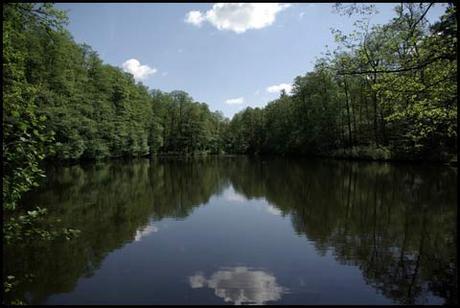Lagiewnicki woods
Lagiewniki is the biggest forest inside a city boundary in Europe and the green lungs of this former industrial powerhouse. Pack a kielbasa and a couple of piwos in a plastic bag and set off by bike for a picnic among the trees and lakes.
The Łagiewniki forest, situated within the borders of the city has got 1200 ha in area, and the very fact makes it unique by the European scale, since none of the European metropolises can benefit from such a vast forest complex, natural and yet close to the centre. Its location poses a lot of problems and threats, particularly of an ecological nature. Its recent plan seems to guarantee the right policy of protection of the valueless natural aspects of the forest and its border.
The Łagiewniki Forest is a relic of the primeaval forests which used to surround the tiny settlement of Łódź in the Middle Ages. The whole area was cleared in the course of the 19th century growth of the cify, so that they remained but in its northern border. The area displays varied surface features, particularly in its eastern part. There are also the River Bzura springs there, together with a network of brooks and ponds. The vegetation mantle is made up of a variety of tree species, with a predominance of the oak, there are also spruce and birch. While wandering in the forest we can sometimes meet squirrels and deer, not to mention the numerous bird species.
The Łagiewniki Forest does not just make an attraction for nature lovers. Close to the route to Zgierz there is one of the oldest historical sites of Łódź - the Franciscan monastery from the early 18th century, an object of pilgrimages, famous for its cult of the painting of St Antony as well as that of the miraculous tomb of Venerable Rafał Chyliński. There are musical concerts organised there every summer. In its close neighbourhood there are two larch chapels of the St. Roch and St Antony's ‘Hermitage' from the 18th century situated in a picturesque little valley. Next to the pond we can find the baron Ludwig von Heinzel-Hohenfels palace, designed according to F. Schwechten's scheme, a well known Berlin architect, in 1898. The recreation values of Łagiewniki are further enhanced owinng to its swimming and hotel facilities. And it's just 20 minutes away from ul. Piotrkowska.
In the north part of the Lagiewniki Forest in City of Lodz you can find interesting historical buildings. First two - late 17th century wooden chapels of St Roch and St Anthony built on the water stream and possible water source - a holy well (some people still believe that water from the chapels can heal or at least is healthy). Nearby of those two chapels, the Franciscans’ Friary. Though the Friary was erected in late 17th century, the building is from the mid 18th century. There are also a few mass graves of Polish civilians killed by German army during the 2nd World War. The forest was one of the first places of mass executions of the civilians after German army take over the town, that was to be incorporated to the 3rd Reich.
Lagiewniki Forest is easily accessed by buses from the centre of the city. It can well compete with the Bois de Boulogne in Paris or Krakow's Wolski Forest. It is a great place for a family picnic, a bonfire, a bicycle trip or a stroll. There are many marked tourist trails and bicycle routes in the forest, as well as specially prepared picnic areas. To get more information, ask about Lagiewniki Forest in Tourist Information Centre in Lodz.




